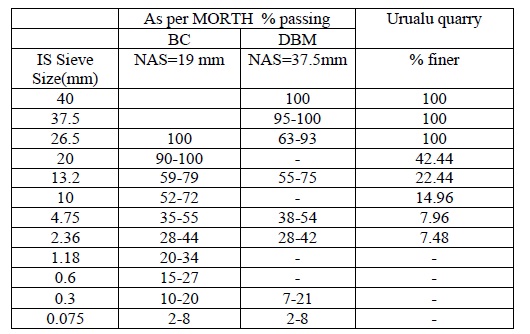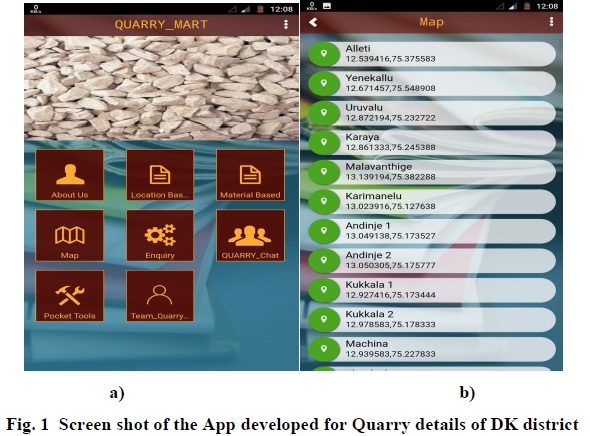





Published on Nov 30, 2023
Bituminous mixes are used as base and wearing courses in a pavement structure to distribute stresses caused by loading and to protect underlying unbound layers from the effects of water. Designing a bituminous mixture to meet the needs of a particular paving project requires careful selection of the aggregate and bitumen to be used. A compatible aggregate source and gradation chosen must meet the needs of the project, because which will affect the overall performance of the bituminous mixture. Bituminous mixture is composed of approximately 95% b weight, or 80% by volume, mineral aggregate. Therefore it is important to see how aggregate gradation can affect the fundamental properties of bituminous mixture. The Bituminous Concrete mix is better than Dense Bituminous Macadam mix in term of indirect tensile strength(ITS), horizontal tensile strain(HTS), and the compressive strength, while Dense Bituminous Macadam mix is better in terms of shear strength and rut resistance.(Haider et.al 2012)
The aggregate comprising particles of various sizes should be such that the smaller particles fill the voids between the larger particles. Aggregate gradation determines the void content within the structure of aggregate.
The optimization of aggregate gradation improves the rheological, mechanical and durability properties of concrete(Pawar et. al 2016). Hence it is necessary to known the quantity of coarse aggregates available and their quality standard as per requirements in a particular area is very important. Therefore the properties of coarse aggregates available in Dakshina Kannada(DK) district and their data availability to the customers is very important before selection of these. Following are the objectives framed for the study.
Keywords : Gradation, Dense Bituminous Macadam, Bituminous Concrete.
1. Determining the strength and gradation of coarse aggregates available in DK District.
2. Comparing the standards of aggregates with requirements of dense bituminous macadam and bituminous concrete as per MORTH specification.
3. Development of App to get the information about number of quarries available, its location, size of aggregates and its quality standard in Dakshina Kannada District.
1. The information about coarse aggregate quarries available in Dakshina Kannada District are collected from Mining Department Mangalore. The details like name of the owner and address, date of grant, period, type of land, place, survey number of the site, Extent(in acres), production, dispatch are collected. The number of quarries in Puttur, Sullia, Belthangadi, Bantawala and Mangalore are 2, 2, 9,13 and 46 respectively.
2. Based on the data field visit was made to collect the information about its location(latitude and longitude), size of aggregates produced , owner information and the aggregates available at site are collected to determine its properties.
3. Tests on aggregates(Specific gravity, water absorption, impact test and gradation) are conducted and their results are compared with the required standards for Dense Bituminous Macadam and Bituminous Concrete as per MORTH(Ministry of Road Transport and Highways)specification.
4. If the results are not agreeable with MORTH values then the blending of aggregate of different quarries for the construction are also suggested.
5. Mobile App is developed to give the information for the consumers about number of quarries available, its location, size of aggregates and its quality standards in Dakshina Kannada District.
Tests are concluded on the aggregate collected from various quarries of the D K district. The test results are compared with requirement standards of Dense Bitumen Macadam(DBM) and Bituminous concrete(BC) mixes. That studies were carried out on aggregates available in Sullia, Puttur, Bantwala and Belthangadi Taluks. In Belthangadi taluk there are nine quarries out of that four quarries are not in working condition from several years, The methodology and test adapted for all quarries are similar, hence in this paper the details of only one quarry of Belthangadi taluk is given in Table1.

Similarly the gradation requirements are given in Table 2 are compared with the obtained test results of all quarries.

Development of App : The details about quarries available at DK district are made to available for customers though the Mobile app. the screen shot of that is as shown in Fig 1.

The study on the properties of coarse aggregates available in Sullia, Puttur, Bantawala Belthangadi Taluks of Dakshina Kannada district are studied. Further, the study is required to extend to Mangalore Taluk. Further more tests like crushing strength, Abrasion tests can be conducted for the aggregates of all the quarries.
From the study conducted following are the conclusions drawn .
Almost all aggregate satisfies the strength requirements of the aggregates for BC and DBM. But the gradation of the aggregates are not as per MORTH. Hence require blending of aggregates. The Mobile App developed will give the information about quarries of aggregates which is more handy for the costumer to select the aggregate type as per requirement.
Haider Habeeb Aodah, Yasir N.A. Kareem, and Satish chandra(November 2012) “ Performance of bituminous mixes with different aggregate gradations and binders”, Internatonal journal of engineering and technology, vol.2, no.11, page no.1802-1812
Chirag Pawar, Palak Sharma and Abhyuday Titiksh( April 2016) “ Gradation of aggregates and its effects on properties of concrete”, International journal of Irena in kesearch and development, vol.3(2), page no.81-84